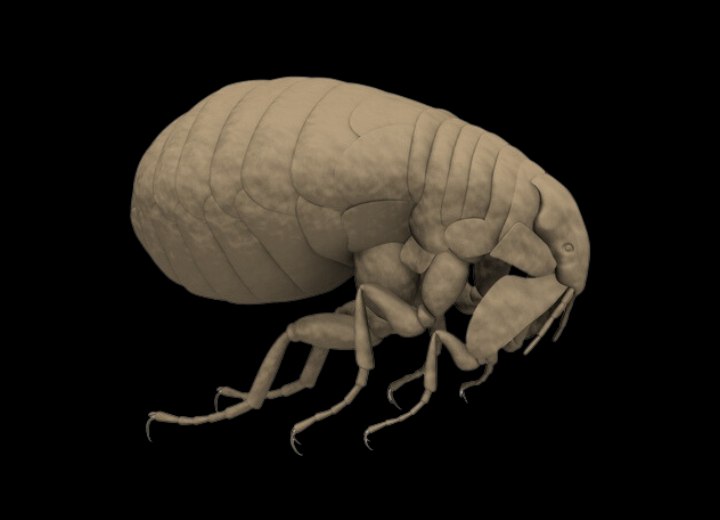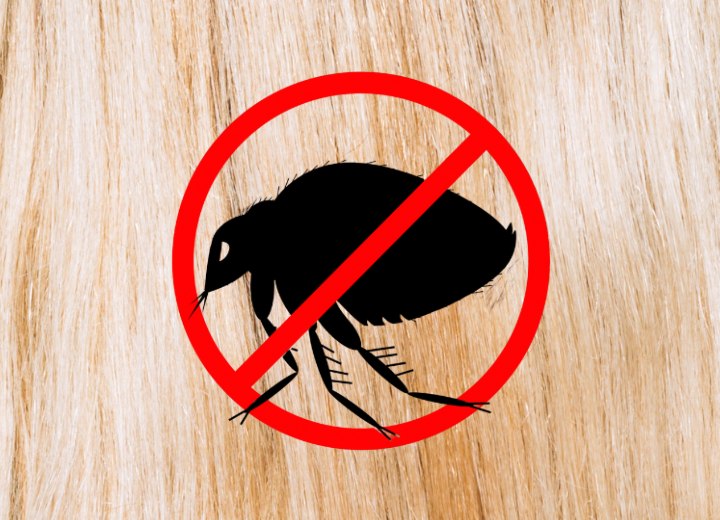Human Hair and Fleas

History
Fleas have existed for at least 55 million years, and this we know because they have been found encased in ancient amber. It is thought that fleas used to exist on tree sap and decaying plants, and then moved to specializing in the blood of specific kinds of warm-blooded creatures, such as birds, dogs, cats, or humans. The oldest species of flea (the snow flea) still has wings, but most have given up wings in favor of an incredibly powerful hop.
Don't mistake the "preferences" of a flea species with a limitation of whom it might bite. The human flea is not too discriminating in what species' blood it consumes. Along with humans, they also like to feast on dogs, cats, monkeys, birds, rodents, rats, and bats. In addition, fleas that have evolved to live on other species will still take a bite out of you. It seems like common sense to realize that most of the people who deal with flea problems are those who are exposed to other animals.
How to Identify the Human Flea
People will probably want to know how to identify the "human flea" as opposed to fleas that prefer other animals. Human fleas look very similar to other kinds of fleas. The only difference is in the number of mouth bristles they have, which are very few in comparison to other species.
This means that in order to be certain of the specific type of flea you may be dealing with, you often need a microscope or a magnifying lens and very good eyesight. In general descriptions, adult fleas are about 1 to 4 mm long with a tear-shaped body, extremely long hind legs, and a very dark brown or black color. Flea bites in humans tend to not be on the head, but on the arms or legs.

How to Get Rid of Fleas
Although some people may want to think otherwise, it is nearly impossible to prevent fleas. Getting fleas takes no more effort than the misfortune of simply coming into contact with an animal or person who has come in contact with a flea. And since these critters breed quickly and in great numbers, you can find yourself with a problem in a very short period of time, and often before you notice any intrusion on your person. In fact, some people may get bitten by fleas several times and not notice, while another person may be sensitive to the flea (allergic) and react strongly to a single bite.
The good news is that it is possible to get rid of fleas. If you want a direct, traditional medical approach (which is encouraged if you are sensitive) you need to work with your doctor in order to not only remove fleas from yourself but also from your home. You may have to treat a few times for one infestation, because flea eggs are usually impervious to any insecticides and can't be killed until they hatch.
If you prefer a more homeopathic treatment process, there are natural treatments that will do the trick, although you may need to repeat the process a few times to get the permanent removal of the pests. Warning: Never use any flea medication designed for dogs, cats, birds, or rodents on yourself. They can make you sick or, at the least, not work.

Here are a few steps for getting rid of fleas from your person:
First, draw a hot bath. The water should be as warm as can be tolerated. For a standard size bathtub, place 1 cup of plain dish detergent, along with 1 cup of lemon extract. The fatty acids in the dish soap and the limonene from the extract will kill both adult fleas and flea larvae alike.
Soak in the warm water for 30 minutes. Be sure to keep the water as hot as is tolerable by reheating it periodically with more hot water. Lather your hair with standard shampoo, and leave the shampoo in your hair for the duration of the bath.
Scrub your skin and hair thoroughly with an abrasive cloth or sponge. Pay special attention to the areas between your toes and the back of your neck. The area of skin and the hairline immediately above the ears should be scrubbed thoroughly as well. After soaking in the tub, you can rinse yourself thoroughly in the shower.
After you get out of the shower, fill a bowl with soapy water and set it nearby. Comb your hair slowly from root to tip using a fine-toothed comb while the hair is still wet. Place any fleas that appear on the comb in the bowl of soapy water. Repeat the bathing steps twice per week until no more fleas are found. When you combine this process with products designed to kill fleas on bedding and carpet, the insect invasion should be gone in no time.
©Hairfinder.com
See also:
Head lice treatments
Home remedies against lice